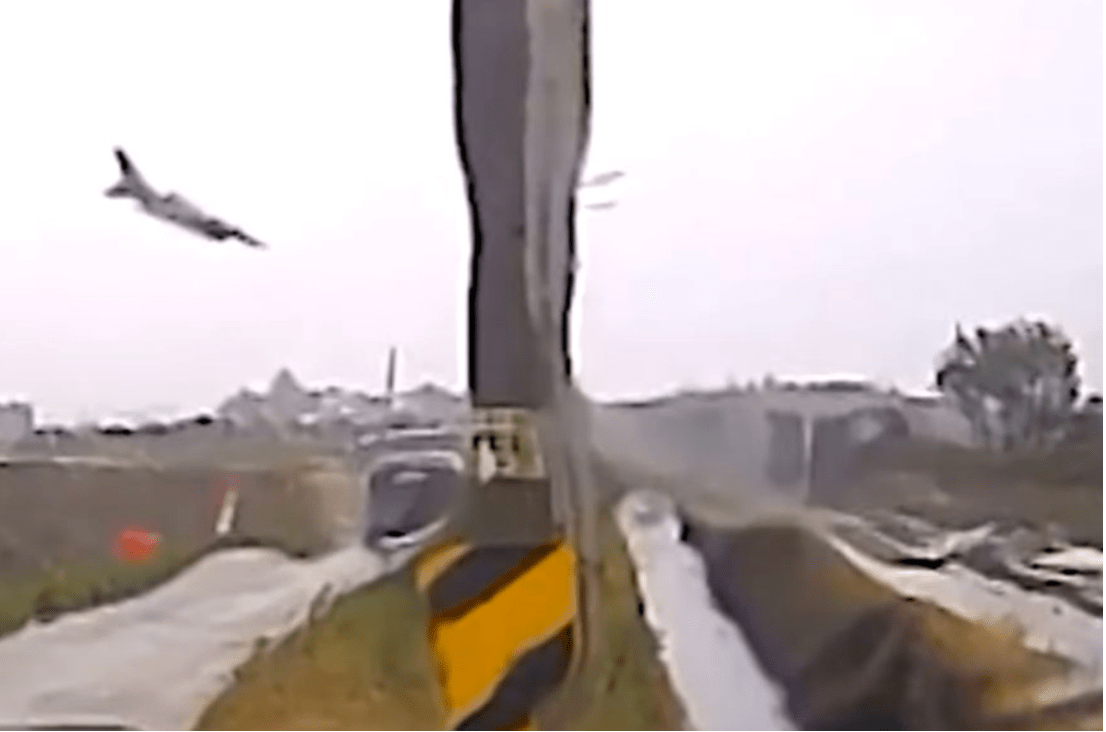

An F-16 pilot ejected just seconds before his jet crashed in a fiery ball just outside Osan Air Base, South Korea after thick clouds and failed instruments left the plane in an unrecoverable dive. The Air Force released an Accident Investigation Board report this week of the May 6, 2023 mishap which destroyed the $30 million jet. The plane’s instruments were so off, investigators wrote, that flying the jet felt like “when you push on the gas in a car and expect the speed to go up, but the speed goes down.”
Investigators found that an electrical failure of the plane’s key flight instruments struck just as the plane entered thick clouds soon after take-off, leaving the pilot with no way to know which way was up or down until it was too late. He also could not communicate on his radio.
“A power loss caused a cascading failure of the [F-16’s] primary flight and navigation instruments,” with the plane’s horizon indicator showing “unreliable and inaccurate data,” a Pacific Air Forces investigation board found.
Just as the instruments failed, the board concluded that the plane entered a thick layer of clouds through which the pilot only got a single glance at the ground. For rest of the two minute flight, the report said, the pilot fought to overcome spatial disorientation within the clouds.
The cause of the electrical failure could not be determined, the board found, due to the destruction of the aircraft. The pilot and plane belonged to the 80th Fighter Squadron at Osan.
Spatial disorientation
Pilots routinely practice “zero-visibility” flying, which can occur either in bad weather or at night. If a pilot loses visual cues on a normal flight, they focus on basic aviation instruments like altimeters, compasses and horizon indicators to develop a mental picture of where they are in the sky, what direction they are flying and whether or not they are climbing or descending.
But when the F-16’s electronics crashed, all of those instruments failed at once.
Still, the report said, the pilot did an admirable job of trying to keep his jet in the air. He “fought through several human factors while attempting to maintain aircraft control and determine which instruments were providing accurate information,” the board said. “The [pilot] recognized he was spatially disoriented and attempted to use his instruments to resolve this disorientation….When the pilot entered a momentary break in the weather, he was able to input flight controls to regain control.”
For about two minutes, the pilot worked to figure out if his plane was going up or down. He “began to climb at an angle greater than desired resulting in an undesired decrease in airspeed,” the board found. “Upon recognition of his climb being at too great an angle, the MP executed a recovery he was trained to execute if he ever found himself with his nose too high for the given airspeed to safely prevent an out-of-control flight condition and return the aircraft back to safe flying parameters.”
But after fighting the controls for over two minutes, the pilot broke out of the clouds and saw that the plane was just over 700 feet in the air and in a dive that he could not recover from, and ejected.
The plane crashed in a farming field and burst into a fireball. The pilot landed under his parachute nearby.
The latest on Task & Purpose
- Marines will land on Normandy beaches to commemorate D-Day’s 80th anniversary
- Air Force raises maximum amount for retention bonuses to $180,000
- Former Admiral’s $500,000 retirement job was a bribe, prosecutors say
- Army special operations officer under investigation after shooting
- Meet the soldier who is taking the Army combatives scene by storm
